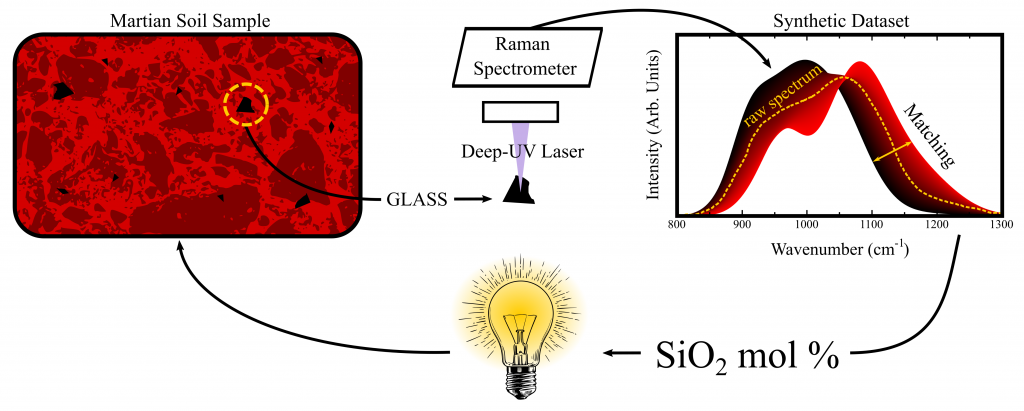Deep UV Raman spectra to reveal Martian history
|The surface of Mars is covered by several volcanic structures that during millions of years originated explosive/effusive eruptions and other geological processes, which possibly supported life or brought it to its extinction on our planetary neighbor. Since 2021, NASA’s Perseverance rover, equipped with a series of state-of-the-art scientific instrumentation, has been exploring the soil of Mars, collecting information that can reconstruct its geological history.
One of these tools is the Scanning Habitable Environments with Raman and Luminescence of Organics and Chemicals (SHERLOC); this instrument allows to perform deep ultraviolet (DUV) Raman spectroscopy, a material analysis technique based on the scattering phenomenon of a monochromatic electromagnetic radiation by the studied sample, very useful to detect organic (or biological) and inorganic (mineralogic) signatures in soils.

In a research, the outcomes of which were recently published in Chemical Geology, Michele Cassetta (University of Trento and Verona), Barbara Rossi (Elettra Sincrotrone Trieste) and colleagues exploited the multi-wavelength UV resonance Raman setup available the IUVSOffline beamline at the CERIC Italian Partner Facility at Elettra Sincrotrone Trieste to demonstrate that with this technique is possible to systematically retrieve information about chemical variability of Martian glasses (originated by violent and fest phenomena, such as volcanic eruptions or meteorite impacts). This is especially true for what concerns the relative abundance of silica, a chemical group which is of extreme interest for the identification and discrimination of magmatic or volcanic processes. In particular, scientists used a Gaussian fitting model to parametrize the number of bridging oxygens resulting from the tetrahedral‑oxygens stretching vibrations along a sub-alkaline join of volcanic glasses. Then they used these data to empirically provide a relation with the glass silica content, validating the model with glasses and other magmatic series with different, known compositions.
Understand, thanks to DUV Raman spectroscopy, the chemical variability of glasses (in particular regarding the presence of silica) could then help researchers to better interpret data coming from SHERLOC and, ultimately, reconstruct Mars’ secret geological past.
ORIGINAL ARTICLE:



